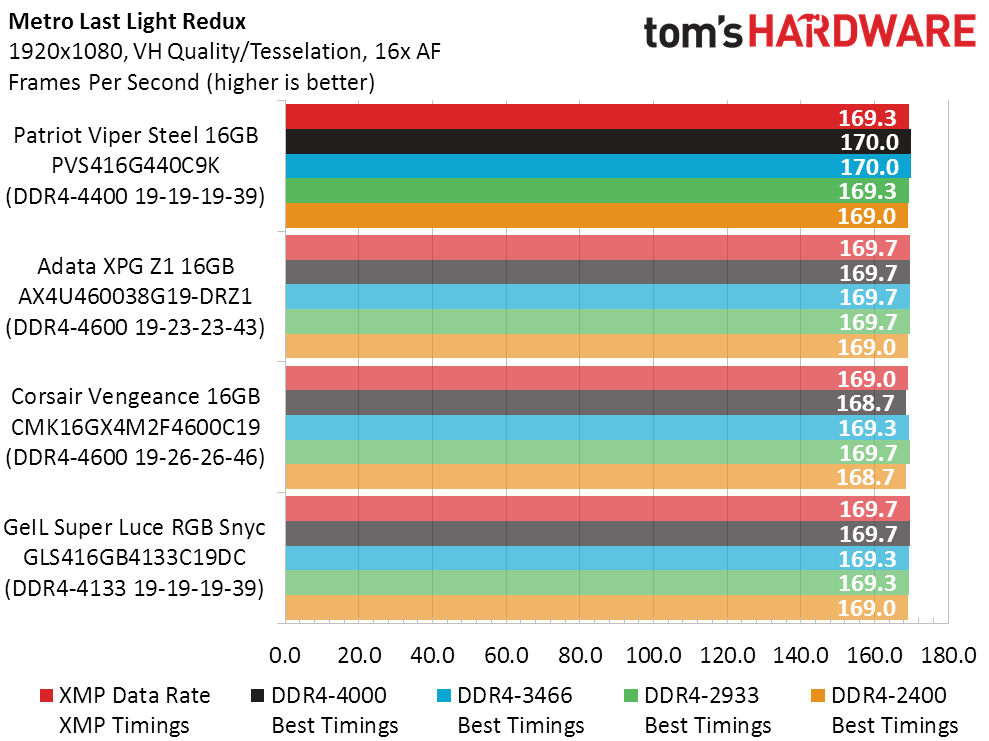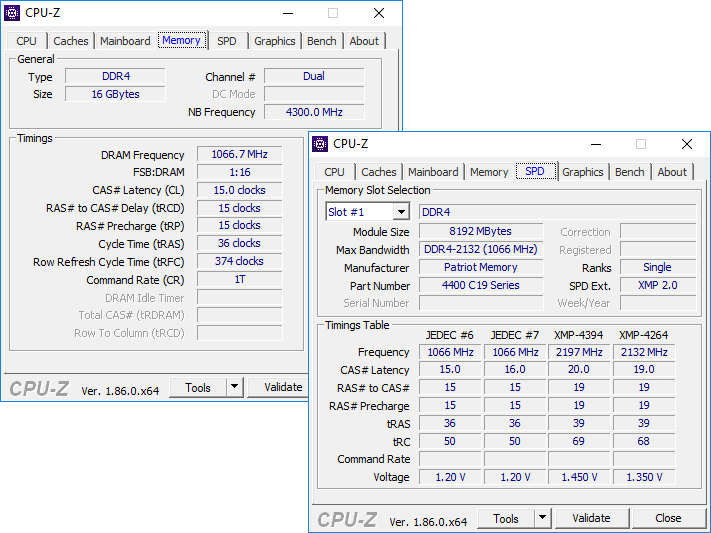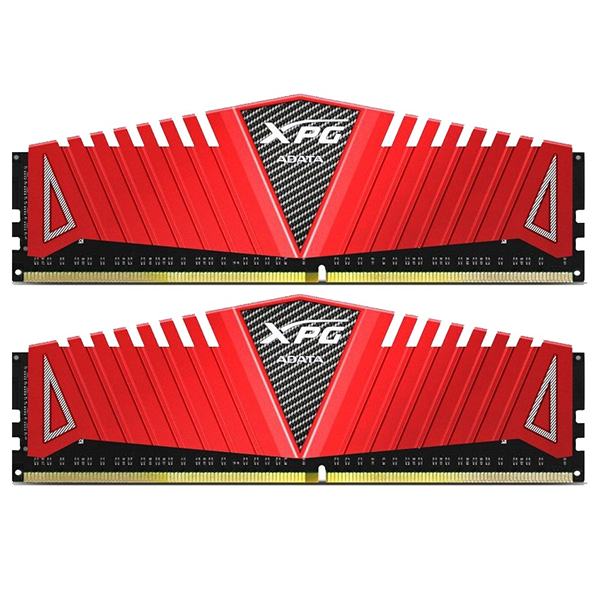Tom's Hardware Verdict
For those with a board that can handle its top speed and games or workloads that can take advantage of it, Patriot’s Viper Steel DDR4-4400 16GB kit is an excellent high-performance option that also skips RGB.
Pros
- +
Superb 19-19-19-39 DDR4-4400 timings
- +
Outperforms competing DDR4-4600 kits
- +
Reasonably priced
- +
RGB-free design
Cons
- -
Pricier than the closest-performing RGB kit
- -
Top XMP profiles require specially-selected motherboards
Why you can trust Tom's Hardware
Patriot's Viper Steel memory lineup encompasses a range of products from DDR4-3000 to DDR4-4400, with models above DDR4-3200 available only as 2x 8GB kits. 16GB isn’t a whole lot of memory capacity these days, particularly when considering that most of the boards capable of supporting this data rate have only two slots.
Yet keeping the kit simple has allowed Patriot to equip the Viper Steel with enhanced timings that dramatically boost the performance of certain programs, including some games. Since the market for pure gaming rigs and focused builds designed for singular tasks is still competitive, the Viper Steel DDR4-4400 sits comfortably in this niche.
Stick an ordinary household magnet on the side of the Viper Steel's cooler and you’ll soon find out that there isn’t enough ferric content in Patriot’s kit to technically justify the back half of its name. For the record, the kit doesn't contain any actual vipers either, but that part of the name didn’t require any scientific testing. What we instead find with this kit a pair of ordinary 8GB single-rank modules equipped with Samsung’s venerable B-Die integrated circuits (ICs) and a pair of red Viper-logo stickers.
Two XMP profiles are included to make that level of overclocking as simple as picking one from the list in your firmware’s GUI.
The DDR4-4400 and DDR4-4266 XMP profiles have the same enhanced 19-19-19-39 primary timings, but the “as simple as” configuration option mentioned above might be an overstatement. Because neither profile worked with our Maximus XI Hero, even after updating its firmware to version 0805. Swapping in the two-slot Maximus XI Gene, we found both profiles completely stable at their respective 1.45V and 1.35V.
While the higher 1.45V violates Intel’s limit, compatible boards will increase the memory controller’s voltage to keep the voltage difference within a safe range. It should be obvious, then, that DDR4-4400 isn’t for every builder, particularly when most motherboards can’t produce a stable DDR4-4400 configuration. Patriot hasn’t published a list of approved boards, leaving buyers to instead check to see if its part number -- PVS416G440C9K -- appears on their motherboard’s approved memory list. And since those lists are never inclusive, you may have to look to your favorite search engine to find out if anyone else has had success pairing this memory with your board of choice. No one said life on the bleeding edge of memory performance was going to be easy.
Comparison Parts and Test Configuration

We wanted to bring you a complete collection of comparison modules specced above DDR4-4000, but the two DDR4-4600 kits are scarcely available and still holding last-year’s prices. That leaves the Super Luce RGB Sync as the only cost-competitive alternative to the Viper Steel, but we’ll still get to see how the higher-rated DDR4-4600 compares in our performance metrics. Since our four-DIMM motherboard didn’t support the full rating of these modules, the dual-DIMM Asus Maximus XI Gene steps in to host our Core i9-9900K at the same fixed 4.80GHz frequency as prior reviews. A GTX 1080 from MSI continues to complement our 256GB OCZ RD400 SSD to minimize other bottlenecks.
Get Tom's Hardware's best news and in-depth reviews, straight to your inbox.
Overclocking and Timing Optimization
Call us stubborn, but we continue to use 1.35V to optimize memory despite the insistence of certain vendors that it’s OK to exceed that Intel-defined limit. Surprisingly, the Viper Steel kit came up only 50MHz shy of its rating when using this lower voltage. Perhaps more surprising was that GeIL’s 1.40V-rated DDR4-4133 reached an even higher DDR4-4400.
We pushed each kit to its lowest-stable primary timings to see how much performance might be gained by making them quicker, and there were a few standouts: Adata’s DDR4-4600 had the worst minimum timings at both DDR4-4000 and DDR4-2400, but somehow tied the Viper Steel for best timings at DDR4-3466. The Asus motherboard obviously makes many behind-the-scenes changes to advanced timings that can impact how far we can tweak the primary timings, but the firm is also known for optimizing performance across most memory brands and settings.
| Lowest Stable Timings at 1.35V (Max) on ROG Maximus XI Gene (BIOS 0805) | ||||
| DDR4-4000 | DDR4-3466 | DDR4-2933 | DDR4-2400 | |
| Patriot Viper Steel 16GB PVS416G440C9K (DDR4-4400 19-19-19-39) | 17-17-17-34 (2T) | 15-15-15-30 (1T) | 13-13-13-28 (1T) | 10-10-10-28 (1T) |
| Adata XPG Z1 16GB AX4U460038G19-DRZ1 (DDR4-4600 19-23-23-43) | 18-18-18-36 (2T) | 15-15-15-30 (1T) | 13-13-13-28 (1T) | 11-11-11-28 (1T) |
| Corsair Vengeance 16GB CMK16GX4M2F4600C19 (DDR4-4600 19-26-26-46) | 17-17-17-34 (2T) | 15-15-15-30 (2T) | 13-13-13-28 (1T) | 10-10-10-28 (1T) |
| GeIL Super Luce RGB Snyc GLS416GB4133C19DC (DDR4-4133 19-19-19-39) | 17-17-17-34 (2T) | 15-15-15-30 (2T) | 13-13-13-28 (1T) | 10-10-10-28 (1T) |
Benchmark Results
One unusual thing we noticed is that the Maximus XI Gene has two configurations for every XMP profile, standard and Asus-optimized with (usually) tighter advanced timings (RRD, RFC, FAW). Listed as XMP II, this alternative is not be confused with XMP Profile 2, which can be selected separately. Asus’ optimizations gave the Viper Steel DDR4-4400 an approximate 10 percent boost in both Sandra measurements, but had a far-less-significant impact on the other modules tested. Given that these optimizations are Asus-specific, we wouldn’t expect this level of Viper Steel dominance on other motherboards.


That Asus-specific performance benefit continues into F1 2015, where average frame rate increased significantly from 152 frames per second (FPS) to 174 FPS after switching between stock XMP and Asus XMP settings. Once again, those settings had minimal impact on the other modules. Furthermore, using the looser timings would have simply decreased the size of the Viper Steel victory.




The performance improvement continued into 7-Zip, where our initial completion time of 7:46 using XMP defaults was dropped from the charts after getting a time of 6:57 with a switch to Asus’ XMP optimizations. And yes, 7:46 would have still beaten the closest kit’s 7:51.
Final Analysis
The real shocker here is the Viper Steel DDR4-4400’s value victory, even though it doesn't exactly seem fair to compare the DDR4-4600 kits that are stuck at last-year’s prices. Furthermore, had we not used Asus’ automatic memory optimization, the Viper Steel’s performance margin would have been too small to even overcome its minuscule $10 price penalty compared to the Super Luce DDR4-4133. And then there’s the price-per-feature aspect of the RGB kit having pretty lights. But of course, not everyone wants lights.
Given everything we just said, the Viper Steel’s value victory isn't quite as clear as it looks on the chart. And not everyone will weigh the kits advantages evenly, of course. But one thing is clear: This is the best-performing 2x 8GB kit we’ve tested, and it doesn't command an exorbitant price. That's enough to earn this kit an award, while making it easy to recommend for speed-craving gamers with compatible boards and those whose workloads would benefit from high clock speed at a limited 16GB capacity.
Want to comment on this story? Let us know what you think in the Tom's Hardware Forums.
MORE: Best Memory
MORE: DDR DRAM FAQs And Troubleshooting Guide
MORE: All Memory Content







